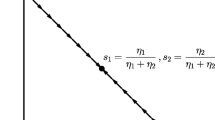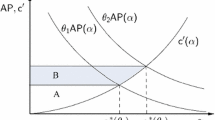Abstract.
A simulation model is used to construct a regime of artificial economic evolution, where Schumpeterian process competition prevails, in the presence of technological uncertainty and bounded rationality. The output decision of the firm is represented by a behavioural algorithm, which allows for the presence of collusive behaviour. The purpose of the experiments is to go some way towards addressing the twin issues of the nature of the relationship between market structure and industry performance in a dynamic setting, and the contention that the evolutionary metaphor implies a laissez-faire stance with respect to policy issues. Under the simplifying assumptions of the model, experiments suggest that industries which generate high average concentration over a given period can compare favourably with industries that generate low average concentration, if the time profiles of both welfare and concentration are analysed. Also, the experiments suggest that the industry will naturally evolve a structure best suited to exploit the technological environment, but despite this there is still a role for intervention into the competitive process.
Similar content being viewed by others
Author information
Authors and Affiliations
Rights and permissions
About this article
Cite this article
Wakeley, T. Schumpeterian process competition, welfare and laissez-faire: An experiment in artificial economic evolution. J Evol Econ 8, 45–66 (1998). https://doi.org/10.1007/s001910050055
Issue Date:
DOI: https://doi.org/10.1007/s001910050055




